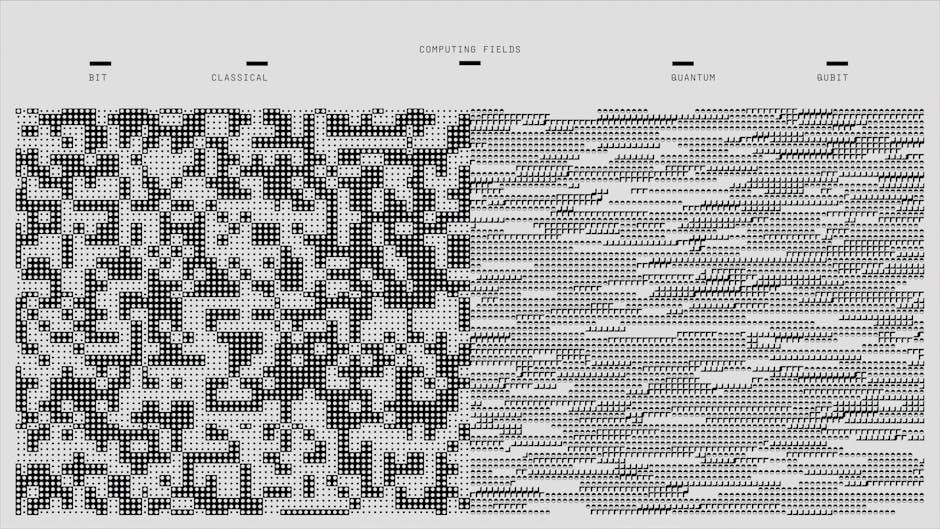The 2A 1C Hoisting License Study Book is an essential resource for candidates preparing for the Massachusetts hoisting license exam, offering comprehensive coverage of equipment, safety protocols, and practical scenarios.
1.1 Overview of the 2A and 1C Licenses
The 2A license primarily covers the operation of crawler and rubber-tired excavators, backhoes, and loaders, while the 1C license focuses on hydraulic telescoping booms without wire ropes. These licenses are essential for professionals in construction and heavy machinery industries, ensuring safe and efficient operation of equipment. The 2A license is ideal for operators handling earthmoving and excavation tasks, whereas the 1C license is tailored for those working with specialized hydraulic equipment. Both licenses require a deep understanding of machinery mechanics, safety protocols, and operational best practices. The study book provides detailed insights into the technical aspects of these licenses, helping candidates grasp the fundamental differences and requirements. By focusing on these specific areas, the guide ensures comprehensive preparation for the Massachusetts hoisting license exam.
1.2 Importance of the Study Book for Exam Preparation
The 2A 1C Hoisting License Study Book is a vital tool for exam preparation, offering a structured approach to mastering the required knowledge. It provides in-depth coverage of technical parameters, safety protocols, and operational best practices, ensuring candidates are well-prepared for the Massachusetts hoisting license exam. The study book includes detailed explanations, practical examples, and practice tests, which help candidates familiarize themselves with the exam format and content. Additionally, it offers tips for effective study and retention, enabling learners to manage their time and focus on key areas. By leveraging this resource, candidates can build confidence and competence, significantly improving their chances of passing the exam and obtaining the necessary certifications for operating specialized equipment;
1.3 Key Topics Covered in the Study Guide
The 2A 1C Hoisting License Study Guide covers essential topics such as equipment operation, safety protocols, and technical specifications. It includes detailed sections on hydraulic telescoping booms, crawler and rubber-tired excavators, and load calculation methods. Additionally, the guide addresses material handling, rigging techniques, and emergency procedures. Practical scenarios and case studies are incorporated to enhance understanding. The study book also emphasizes Massachusetts-specific regulations and industry standards. By focusing on both theoretical knowledge and practical application, the guide ensures comprehensive preparation for the exam. This structured approach helps candidates grasp complex concepts and apply them effectively in real-world situations.

Eligibility Criteria for the 2A 1C Hoisting License
Eligibility requires candidates to meet specific age, education, and experience standards. A medical fitness certification and completion of mandatory training hours are also essential for licensing approval.
2.1 Age Requirements
To qualify for the 2A 1C Hoisting License, applicants must meet specific age criteria. Typically, candidates must be at least 18 years old to apply, as this is a common requirement for operating heavy machinery. There is no upper age limit, but physical and mental fitness are critical. Some states may allow younger individuals to apply under certain conditions, such as parental consent or enrollment in a training program. Age requirements ensure that applicants have the maturity and physical capability to handle the responsibilities associated with hoisting operations safely. It is essential to verify the exact age requirements with the licensing authority, as regulations may vary. Proper documentation, such as a birth certificate or government-issued ID, is usually required to confirm eligibility.
2.2 Educational Background
The educational background required for the 2A 1C Hoisting License primarily focuses on completing relevant training programs rather than formal academic degrees. While a high school diploma or equivalent is often recommended, it is not always mandated. Applicants are expected to demonstrate a strong understanding of mechanical principles, safety protocols, and operational procedures. Many candidates benefit from enrolling in vocational or technical schools that offer courses in heavy machinery operation or construction safety. Additionally, apprenticeships and on-the-job training are highly valued. The study guide plays a crucial role in bridging any knowledge gaps, ensuring that all candidates, regardless of their educational background, are adequately prepared for the exam. Practical knowledge and hands-on experience are prioritized over formal education in this field.
2.3 Medical Fitness Certification
Obtaining a medical fitness certification is a critical requirement for applicants seeking the 2A 1C Hoisting License. This certification ensures that candidates are physically capable of operating heavy machinery safely and effectively. The medical exam typically includes vision tests, hearing assessments, and evaluations of physical stamina. Applicants must meet specific health standards to ensure they can handle the demands of hoisting operations. The study guide emphasizes the importance of this certification, as it is a non-negotiable prerequisite for licensing. Candidates are advised to schedule their medical evaluation well in advance to avoid delays in the licensing process. The certification must be completed by a licensed medical professional and submitted along with the license application. This step ensures that all operators are fit to perform their duties without risking their own safety or the safety of others on-site.
2.4 Work Experience Requirements
Applicants for the 2A 1C Hoisting License must demonstrate relevant work experience in operating hoisting equipment. This ensures practical knowledge and hands-on skills in managing machinery. Typically, candidates need at least one to two years of experience directly related to hoisting operations. The experience should involve the operation, maintenance, and safety protocols of equipment relevant to the 2A and 1C classifications. Tasks such as crane operation, equipment setup, and load management are considered qualifying experiences. Candidates must provide detailed documentation of their work history, including employer verification or records of equipment operation. This requirement ensures that license holders are competent and capable of safely operating hoisting machinery. By emphasizing real-world experience, the licensing process aims to enhance workplace safety and operational efficiency. Candidates are encouraged to thoroughly document their experience to avoid delays in the licensing process.

Study Guide Content and Structure
The study guide provides a structured approach to learning, covering equipment operation, safety protocols, and practical scenarios. It includes detailed diagrams, step-by-step instructions, and exam preparation tips.
3.1 Detailed Breakdown of the Study Material
The study material is organized into clear sections, starting with an overview of hoisting license requirements and progressing to in-depth technical details. It covers equipment-specific information, such as the operation of crawler and rubber-tired excavators, backhoes, and loaders, which fall under the 2A category. For the 1C license, the guide delves into hydraulic telescoping booms without wire ropes, ensuring a thorough understanding of each machine type. Practical scenarios and case studies are included to simulate real-world challenges, helping learners apply theoretical knowledge. The material also emphasizes safety protocols, load calculation methods, and rigging techniques, all of which are critical for exam success. Clear explanations, diagrams, and step-by-step instructions make complex concepts accessible, while practice questions reinforce retention. This structured approach ensures comprehensive preparation for both the written and practical aspects of the hoisting license exam.
3.2 Practical Examples and Case Studies
The study book incorporates real-world scenarios and case studies to provide hands-on learning experiences. These examples focus on equipment operation, load calculation, and safety protocols. For instance, it includes scenarios involving hydraulic telescoping booms and crawler excavators, highlighting common challenges and solutions. Case studies cover incidents such as equipment malfunctions or improper rigging, teaching learners how to identify and rectify issues. Practical examples also demonstrate how to handle varying soil conditions and uneven terrains, which are critical for safe operations. These real-life applications help learners develop problem-solving skills and reinforce theoretical knowledge. By simulating actual workplace situations, the study material bridges the gap between classroom learning and on-site responsibilities, ensuring learners are well-prepared for the demands of the job and the licensing exam.

3.3 Tips for Effective Study and Retention
EFFECTIVE study habits are crucial for mastering the material in the 2A 1C Hoisting License Study Book. Start by breaking down the content into manageable sections, focusing on one topic at a time. Use flashcards to memorize key terms and concepts, such as equipment classifications and safety protocols. Practice problems and scenarios regularly to reinforce understanding. Dedicate specific times for study to maintain consistency. Engage in active learning by summarizing chapters in your own words or teaching the material to others. Prioritize hands-on experience to complement theoretical knowledge. Review and reflect on difficult topics, ensuring comprehension before moving forward. Utilize digital tools, like quizzes or apps, to test retention. Regularly revisit previously studied material to prevent forgetting. By combining these strategies, learners can efficiently prepare for the exam and retain critical information long-term.

Exam Preparation and Practice Tests
Thorough exam preparation is vital for success. Utilize practice tests to familiarize yourself with the format and content. Focus on weak areas and review answers to improve accuracy.
4.1 Format and Structure of the Exam
The 2A 1C hoisting license exam is structured to assess both theoretical knowledge and practical understanding. It typically includes multiple-choice questions, scenarios, and calculations. Candidates are tested on equipment operation, safety protocols, and industry regulations. The exam is timed, with a set number of questions that must be answered within the allocated period. The format is designed to evaluate problem-solving skills and the ability to apply knowledge in real-world situations. Additionally, the exam may include sections on load calculations, rigging techniques, and emergency procedures. Understanding the format is crucial for effective preparation, as it allows candidates to focus on key areas and manage their time efficiently during the test. Practice tests and study guides, such as the 2A 1C Hoisting License Study Book, provide valuable insights into the exam structure, helping candidates prepare thoroughly.
4.2 Importance of Practice Tests
Practice tests are a crucial component of exam preparation for the 2A 1C hoisting license. They provide candidates with a realistic understanding of the exam format and content, helping to identify areas where additional study is needed. By simulating actual test conditions, practice tests improve time management and reduce anxiety. They also familiarize candidates with the types of questions they will encounter, such as multiple-choice and scenario-based problems. Regularly taking practice tests enhances retention of key concepts and builds confidence in applying knowledge under pressure. Many study guides, including the 2A 1C Hoisting License Study Book, offer practice tests that mirror the actual exam, ensuring candidates are well-prepared for the challenges they will face. Utilizing these resources is essential for achieving success on the Massachusetts hoisting license exam.
4.3 Strategies for Tackling Difficult Questions
When faced with challenging questions during the 2A 1C hoisting license exam, it is important to employ effective strategies to maximize scores. First, carefully read the question and identify key terms or phrases that indicate the correct answer. Eliminate obviously incorrect options to narrow down choices. If unsure, use knowledge of hoisting equipment and safety protocols gained from the study guide to make an educated guess. Additionally, manage time wisely by skipping difficult questions initially and returning to them later; Utilizing practice tests and study materials, such as those from Quizlet, can help build familiarity with common question formats. Lastly, stay calm and systematic in approaching each question to ensure clarity of thought. These strategies enhance problem-solving skills and improve overall performance on the exam.

Practical Training and Hands-On Experience
Practical training and hands-on experience are crucial for mastering 2A 1C hoisting operations. Real-world application enhances understanding, ensuring proper and safe equipment operation under professional guidance.
5.1 Role of Practical Training in License Acquisition
Practical training plays a vital role in acquiring the 2A 1C hoisting license, as it bridges the gap between theoretical knowledge and real-world application. Hands-on experience allows candidates to operate equipment safely and efficiently, understanding machinery mechanics and workplace hazards. Training programs often simulate real-life scenarios, enabling learners to apply safety protocols and problem-solving skills effectively. Instructors provide personalized feedback, helping candidates refine their techniques and build confidence. This experiential learning is essential for mastering the complex tasks required for hoisting operations. By combining classroom study with practical exercises, candidates gain a comprehensive understanding of equipment functionality, load management, and emergency procedures. Practical training ensures that license holders are well-prepared to handle the demands of the job, reducing risks and promoting a safer working environment.
5.2 Finding Reputable Training Programs
Finding reputable training programs is crucial for successfully obtaining the 2A 1C hoisting license. These programs should be accredited and conducted by experienced instructors who specialize in hoisting operations. Look for programs that combine theoretical knowledge with hands-on training, ensuring a comprehensive understanding of equipment operation, safety protocols, and industry regulations. Online forums and professional organizations often provide recommendations for reliable training providers. Additionally, reviews from past participants can offer insights into the quality and effectiveness of the training. Ensure the program aligns with the requirements outlined in the study book and covers practical scenarios relevant to the exam. A well-structured training program not only enhances preparation but also builds confidence and competence in handling real-world hoisting tasks.
5.3 Importance of Instructor Guidance
Instructor guidance plays a pivotal role in mastering the skills required for the 2A 1C hoisting license. Experienced instructors provide personalized feedback, helping candidates understand complex concepts and address weaknesses. They offer real-world insights, ensuring that theoretical knowledge is applied effectively in practical scenarios. Instructors also emphasize safety protocols and industry best practices, which are critical for passing the exam and operating equipment safely. Their expertise helps candidates navigate challenging topics, such as load calculations and equipment operation, with confidence. Moreover, instructors often share tips for retaining information and performing well under exam pressure. Their support is invaluable for both novice and experienced operators, ensuring a comprehensive understanding of hoisting operations and preparing candidates for real-world challenges.

Maintaining and Renewing the License
Maintaining the 2A 1C hoisting license requires periodic renewal, continuing education, and adherence to updated regulations to ensure ongoing competency and safety standards in hoisting operations.

6.1 License Renewal Process
The renewal process for the 2A 1C hoisting license involves submitting an application, paying the required fee, and providing proof of completing continuing education requirements. Licenses typically expire after a set period, and renewal ensures ongoing compliance with safety standards and industry regulations. Applicants must verify their eligibility and submit all necessary documentation, including any updated medical certifications or proof of work experience, if required. Late renewals may incur additional fees or penalties; It is crucial to check with the issuing authority for specific deadlines and requirements to avoid license suspension or revocation. Proper documentation and timely submission are essential to maintain certification and continue operating hoisting equipment legally. Staying informed about renewal procedures ensures uninterrupted professional operations in the field.
6.2 Continuing Education Requirements
To maintain the 2A 1C hoisting license, candidates must fulfill continuing education requirements, which ensure they stay updated on industry standards, safety protocols, and technological advancements. These requirements typically involve completing a specified number of hours in approved courses, which may cover topics such as equipment operation, hazard recognition, and regulatory changes; Many programs offer online modules or in-person workshops, providing flexibility for working professionals. The study book often includes resources or recommendations for completing these requirements, such as approved training providers or relevant coursework. Ensuring ongoing education not only satisfies licensing obligations but also enhances practical skills and knowledge, contributing to safer and more efficient operations. Regular updates and refreshers are crucial for maintaining certification and professional competence in the hoisting industry.
6.3 Staying Updated with Industry Regulations
Staying updated with industry regulations is crucial for maintaining the 2A 1C hoisting license and ensuring compliance with current standards. The study book often includes sections dedicated to recent changes in laws, safety protocols, and technical specifications. Regularly reviewing updates from regulatory bodies, such as the Massachusetts Department of Public Safety, helps license holders adapt to new requirements. Additionally, attending workshops or webinars focused on regulatory updates can provide insights into emerging trends and modifications in hoisting operations. By staying informed, professionals can avoid penalties, ensure safe practices, and demonstrate commitment to professional development. The study guide serves as a valuable resource for understanding and implementing these updates effectively, ensuring that license holders remain compliant and knowledgeable in their field.

Additional Resources and Support
The 2A 1C Hoisting License Study Book offers additional resources such as online forums, professional associations, and mobile apps to aid in comprehensive exam preparation and ongoing education.

7.1 Online Communities and Forums
Online communities and forums provide invaluable support for candidates preparing for the 2A 1C hoisting license exam. Platforms like Reddit and Facebook groups dedicated to hoisting licenses offer spaces for candidates to share experiences, ask questions, and gain insights from licensed professionals. These forums often feature discussions on challenging topics, practical advice, and strategies for tackling difficult questions. Additionally, resources like Quizlet offer flashcards and study sets specific to the 2A 1C exam, making it easier to memorize key terms and concepts. Websites such as Docsity provide access to study guides, practice exams, and detailed solutions, further enhancing preparation. Engaging with these online resources fosters a sense of community and ensures candidates stay updated on the latest industry developments and exam requirements.
7.2 Professional Organizations and Associations
Professional organizations and associations play a crucial role in supporting individuals preparing for the 2A 1C hoisting license exam. These groups often provide access to exclusive resources, training programs, and networking opportunities. For instance, organizations like AXITECH offer professional certification programs and service plans tailored for hoisting equipment operators. Additionally, international bodies such as the International Union of Machine Builders promote professional development and industry standards, which are vital for exam preparation. Many of these associations also publish study materials, including detailed guides and technical specifications, to help candidates understand complex topics like hydraulic telescoping booms and crawler excavators. By affiliating with these organizations, candidates can gain insights into the latest industry practices and regulatory requirements, ensuring they are well-prepared for both the exam and their future careers in hoisting operations.
7.3 Utilizing Technology for Study
Technology plays a vital role in modern exam preparation, offering innovative tools to enhance study efficiency for the 2A 1C hoisting license. Online platforms provide comprehensive study guides, practice tests, and interactive flashcards, such as those available on Quizlet, to aid in memorizing key terms and concepts. Digital resources like PDF study books and exam prep courses allow candidates to access materials anytime, anywhere, facilitating self-paced learning. Additionally, certain websites offer downloadable forms and guides, such as the Massachusetts 2A-1C hoisting license study guide, which can be edited and shared electronically. Technology also enables interactive learning through simulations and virtual training programs, helping candidates grasp complex topics like hydraulic equipment operation. By leveraging these digital tools, individuals can streamline their study process, ensuring they are well-prepared for the exam while staying updated with industry advancements.










